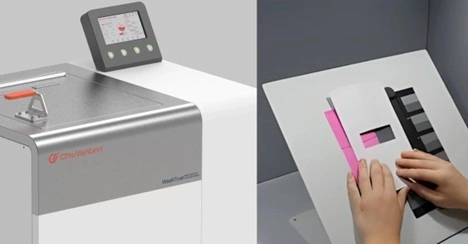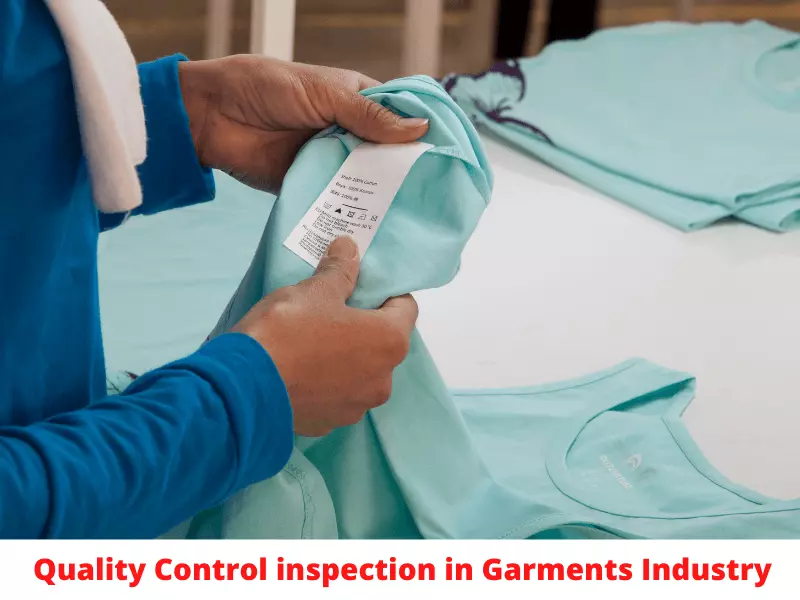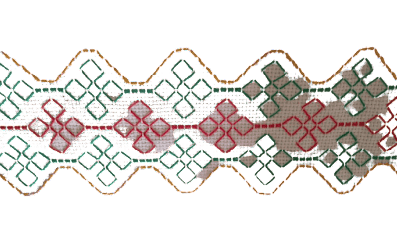Textile colorfastness is an important parameter for determining their quality standard. Testing of this parameter indicates how fabric holds its original color, even when it is exposed to different conditions.
For example, colorfastness testing includes fastness to washing, rubbing, light and perspiration. If a fabric has poor colorfastness, then it means fabric color will bleed. Even this fabric can stain the other light fabrics.
Poor colorfastness reduces the product value. It damages the brand reputation, causes customer dissatisfaction. Textile color bleeding is also a concern for consumer body health, due to direct contact with skin.
In simple words, we can say that colorfastness is basically the resistance of a printed or dyed fabric to lose color. Because textile’s color may fade after washing, and sunlight exposure. So, a fabric with good colorfastness means its color will not fade after use.
To ensure the colorfastness of textiles, the ISO organization provides the ISO 105 series. It has a range of standardized testing methods. This range is used to ensure textile products consistency and reliability.

Why Color Fastness Matters?
When we buy a bright colored shirt, we expect that its color will stand after many washes. Its color will not fade in sunlight exposure and regular wear. But if the dye color fades, after washing, sun exposure, rubbing or contact with sweat.
Then it will not only affect the garment’s appearance, but also a concern for consumer health. Because dye molecules can be absorbed in skin through sweat, and can cause skin irritation or allergies. It also affects the brad reputation and customer satisfaction.
Faded clothes can leave stain on other garments. So, the resistance of fabric colors to different external factors such as washing, sunlight, rubbing and perspiration is called color fastness.
Therefore, colorfastness is a key parameter that is used to evaluate the resistance of dyes to bleed. It measures the color resistance against various external factors during processing and use.
Shifting Standards in the Global Textile Industry
In past textile manufactures were focused on meeting minimum colorfastness level to pass their product’s quality. But today global brands and importers demand high and comprehensive standards. They demand higher and consistent performance of all fastness types.
Because now consumer has realized that outstanding performance in a single-color fastness is not sufficient. Single test does not reflect the product’s overall performance in real world conditions.
For example, a shirt’s colorfastness may be good in washing but not good in sunlight exposure. Similarly, it might possible that shirt has good sunlight fastness but fades severely when expose to sweat.
This shift of meeting standard from minimum colorfastness to high and comprehensive standards happened due to following factors.
Increasing Global Demand in Textile Trade
With the passage of time, as the population is increasing, the demand of textile product is also increasing. So, to do global trade in textile, your product must be compliant with targeted country.
Customer Awareness
Now, textile users have been award with colorfastness properties of fabrics. They demand and expect that the fabric they are buying will not bleed, and maintain its physical appearance after several washes.
Environmental and Safety Regulations
Textile color bleeding is a concern for the safety of consumer health and environment. Because poor dye fixation or unstable pigments can release harmful substances that are dangerous for environment and customer’s body health.
ISO 105: The Global Benchmark for Color Fastness Testing
ISO 105: The Global Benchmark for Color Fastness Testing
To ensure uniform and reliable textile testing related to colorfastness, the International Organization for Standardization (ISO) provided the ISO 105 series standards. This series gives a multidimensional and multi-indicator comprehensive colorfastness evaluation system.
These standards cover all major types of colorfastness tests, such as
- ISO 105-C06
Color fastness to washing
- ISO 105-E04
Color fastness to perspiration (acidic and alkaline)
- ISO 105-X12
Color fastness to rubbing
- ISO 105-B02
Color fastness to light using xenon arc lamps
Each method defines sample preparation, testing equipment, temperature, pH and all related parameters. Each standard also describes about Gray scale for color change and Gray scale for staining.
Multidimensional Colorfastness Evaluation System
Colorfastness of a textile cannot be predicted comprehensively through a single test. So, that why in current era, there is used a multidimensional colorfastness evaluation system.
In this system, a textile product undergoes from multiple colorfastness tests, such as washing, rubbing, light, and perspiration. This technique helps to predict the overall performance of a fabric according to real world conditions.
ISO 105 Series Standards and Fastness indicators
The International Organization for Standardization (ISO) provides ISO 105 Series of standardized testing methods. This series of testing methods determine the textile’s colorfastness by different methods.
ISO 105 series helps in comprehensive study of textile product regarding colorfastness. After getting the results, you may predict the performance of fabric regarding color fastness in real world use.
ISO 105 series has 50 different testing methods. Each testing method determines the single parameter. For example, to determine washing, rubbing, light and perspiration fastness, each parameter has separate testing method.
In textile colorfastness evaluation, washing, rubbing, light and perspiration are the main parameters. The results of all these parameters gives a comprehensive report for colorfastness evaluation.
1.1 Washing Fastness (ISO 105-C Series) [H3]
Washing fastness evaluates textile’s resistance to household or commercial laundering. It is the most common issue for which consumer care about most.
Principle [H4]
The fabric specimen is sewn together with a specified adjacent fabric, which could be multifiber or single fiber cloth. The multifiber fabric contains cotton, wool, nylon, polyester, acrylic and acetate stripes.
The combined samples are then washed in a soap solution under controlled temperature, time, mechanical action, and detergent concentration. This test can be performed in lab scales HT or wash-tech machines.
After washing, the specimens are dried. The fading and staining of adjacent fabrics are assessed using standard Grey scale. The color change in original shade and staining to adjacent fabric is rated from Grade 5 (no change) to Grade 1 (severe change).
The rating of fading and staining is given according to ISO 105-A02 and ISO 105-A03.
Multidimensional Parameters [H4]
The ISO 105-C Series is not a single test method, but it is a matrix of options. It includes several versions from C01 to C10, each defines different washing severities. The testing parameters vary depending on the fabric type and intended end use.
- Temperature [H5]
Temperature varies from mild 40 °C to severe 95 °C. For gentle washing ISO 105-C06: A1S is performed at 40 °C. Normal domestic washing for cotton and polyester is done at 50–60 °C. The ISO 105 – C10 is performed at 95 °C for industrial or hospital grade washing.
- Time and Mechanical Action [H5]
There are used steel balls to simulate the mechanical agitation. Washing test is performed from 30 – 45 minutes, with or without steel balls to simulate agitation intensity.
- Selection of Test Conditions [H5]
Test conditions depend on the product’s end use and fiber type. For example, silk is tested gently under 40 °C conditions. While polyester and cotton may require 60 °C or higher.
- Bath Ratio & Detergent Composition [H5]
The liquor to fabric ratio L:R is kept 50:1 for reproducibility. Non-phosphate detergent or soap is used to simulate alkaline washing.
- Evaluation [H5]
Test results are graded with standard grey scales ISO 105-A02, A03. The fading and staining each are rated from Grade 5 (best) to Grad 1 (worst). The digital spectrophotometer may be used for precise color difference measurement ΔE values.
The washing fastness test results below Grade 3 indicate poor fastness and may cause customer complaints. The washing fastness is a measure of color durability in textiles.
It helps manufacturers to ensure that garments remain attractive and safe after multiple washing cycles.
1.2 Perspiration Fastness (ISO 105-E04)
Perspiration Fastness (ISO 105-E04)
Perspiration fastness simulates the effect of human sweat on textile color. It is an essential factor for hose garments that are direct in contact with skin.
Principle [H4]
The specimen and adjacent multifiber fabric are soaked in the artificial perspiration solution. There are used two types of artificial sweat, acidic with pH 5.5 and basic with pH 8.0. The samples are placed between glass or acrylic plates under fixed pressure of 12.5 KPa.
The specimens are kept in an incubator at 37 ± 2 °C for 4 hours. It simulates body temperature and sweating conditions. Afterward the samples are dried and Graded, using Gray Scales for Color Change (ISO 105-A02) and Staining (ISO 105-A03).
There should be evaluation of perspiration fastness in both acidic and basic artificial sweats separately.
Importance
Human sweat composition and pH vary with diet, activity and body chemistry. So, it is safer to test textile products such as sportswear, innerwear, and uniforms for both acidic and alkaline sweat conditions.
Testing under both acidic and basic perspiration conditions ensures that fabric will maintain its color and do not bleed or fade. It gives more realistic simulation and reduces the risk of unexpected discoloration.
1.3 Rubbing Fastness (ISO 105-X12)
Rubbing Fastness (ISO 105-X12)
Rubbing fastness measures how dye transfers from a textile surface to another surface during friction. It is divided into two types, dry rubbing and wet rubbing.
Principle
The Crock meter is the standard instrument that used for rubbing fastness. The standard cotton rubbing cloth is clamped with rubbing head that moves back and forth over the specimen. For one complete test, Crock meter covers 10 number of strokes while applying fixed 9 N pressure.
For dry rubbing we use dry cloth. For wet rubbing, the rubbing cloth is prewetted with distilled water to simulate sweaty or damp conditions.
Evaluation
The staining on the white cotton cloth is compared to Gray scale for staining ISO 105 – A03. The clothe is rated from Grade 5 (no staining) to Grade 1 (severe staining). Wet rubbing Grade are usually lower than dry rubbing. It is due to moisture that makes dye migration easy.
The rubbing fastness test is mainly important for dark colored products such as denim, black polyester, and pigment printed textiles. Because in these products, dye surface residues tend to transfer more easily during wear or handling.
Light Fastness (ISO 105-B Series)
Light fastness measures how textiles resist to color fading when exposed to sunlight. This test has longest testing cycle and many numbers of influencing factors.
Principle [H4]
The sample is tested alongside Blue Wool Standards (L1–L8) inside a xenon arc light chamber. This system replicates the full solar spectrum. After xenon arc lamp exposure from 36 to 72 hours, specimen’s fading is compared with Blue Wool standard to determine its grade.
Blue Wool Standards [H4]
The wool fabric from Grade L1 to L8 serve as reference material. L1 has the poorest light resistance while L8 has the strongest. Each higher grade roughly doubles the resistance to light as compare to previous one.
Methods
- BO2
The specimen is exposed to simulated sunlight until it reaches a specified fading level. For example, Grade 4.0.
- B04 [H5]
It is the most advanced method, uses xenon arc lamp. It is currently the most advanced technique for simulating the full spectrum of day light with controlled temperature, humidity, and UV intensity.
Other test such as, fastness to seawater, chlorinated water (swimwear), dry cleaning, and ironing are also included in comprehensive evaluation system. The application of these tests depends on the product’s end use.
2.0 Precise Calibration of the Xenon Arc Aging Chamber [H2]
In textile light fastness testing, the xenon arc aging chamber is considered as the most important tool. Because this instrument simulates the spectrum of sunlight. Its rays include ultraviolet (UV) rays, visible and infrared rays.
Light fastness test accuracy heavily depends on the precise control of testing conditions.
2.1 Working Principle of the Xenon Arc Chamber [H3]
The xenon arc lamp produces a spectrum of light that resembles with day light. In light fastness testing, specimens are kept under the xenon arc lamp for specified periods.
In xenon arch chamber specimens are kept in light and dark cycles. These cycles simulate the day and night. The humidity and temperature can be maintained in arch chamber to simulate the outdoor weathering.
2.2 Xenon Arc Chamber Calibration [H3]
Light fastness test result’s consistency heavily depends on the following parameters. These factors should be strictly monitored and controlled.
- Spectral Calibration [H4]
Practice of Textile Color Fastness Evaluation
A color fastness report for a textile product, does not rely on rating. But it also requires the analysis regarding product’s end use, fabric type, dyeing technique, and end use conditions.
A textile product should have complete testing of washing, rubbing, light, and perspiration fastness.
3.1 Comprehensive Judgment
- Focus on application
1. Outdoor products
For outdoor products, such as tents, outdoor apparel, light fastness is the top priority then washing and rubbing. The rating of outdoor products should be more than 5.0.
2. Underwear, sportswear, summer garments
For undergarments, perspiration and washing fastness properties are ore important. Because these products have direct skin contact. So, perspiration fading is risky and body health.
3. Home textiles (sofas, curtains)
Curtains require good light fastness because they face long term sunlight exposure. While sofas require good rubbing fastness due to frequent rubbing during daily use.
4. Denim and dark coats
Denim and dark coats require good wet rubbing fastness. Because humidity can cause dye bleeding easily in dark shade textile products.
- Fiber and dye compatibility
1. Cellulose fibers
These have good washing fastness, but poor wet rubbing fastness.
2. Polyester
Polyester have excellent washing fastness, but has poor sublimation fastness. Polyester bleeds under high temperature ironing.
3. Wool
Wool dyeing produces bright shades, but it has poor washing and light fastness.
- Correlation analysis
It i seen, that sometimes, a weak point in one area indicates the poor performance in other case. For example, if a fabric has poor wet rubbing fastness, then it will also have poor washing fastness. It happens due to weak bonding between fiber and dye.
3.2 Case of Comprehensive Judgment [H3]
Here is the case study of a dark colored dress shirt of a good brand.
- Washing fastness (40 °C) [H4]
- Change of Shade Grade: 4 – 5
- Staining Grade: 4
- Perspiration fastness (acid/alkali) [H4]
- Change of Shade Grade: 4.0
- Staining Grade: 4.0
- Dry Rubbing
- Dry Rubbing Grade: 4.0
- Wet Rubbing Grade: 2 – 3
- Light Fastness
- Light Fastness Grade: 5.0
Analysis and Judgment
According to all fastness parameters, dress will perform well except for wet rubbing. Because it is below the standard at least 3.0 Grade. This shirt color may transfer in rain, sweat or contact with light colored fabrics.
Conclusion
This product is not qualified due to poor wet rubbing fastness. Despite of its good washing and light fastness properties. The root cause of poor wet rubbing fastness may be due to poor dye selection, fixation process, or insufficient post washing.
This case clearly shows how a single parameter may lead to product failure and customer complaints. So, to ensure the quality of textile products, multidimensional comprehensive evaluation is essential.
Conclusion and Outlook
Colorfastness control in textiles is a detailed and technical process. The ISO 105 series provides clear and scientific testing methods to verify the colorfastness properties. Advanced instruments such as xenon arc testers provide reliable and accurate data.
In future as new fabrics, dyes and finishing process technologies appear, there will be need to test the colorfastness of textile products against chlorine, oxidation, and environmental impacts.
At the same time, testing technologies are also advancing. For example, computer vision and artificial intelligence is helping for accurate Gray scale rating. There are also developing digital prediction models for color change.
No matter how the testing methods change, the comprehensive evaluation of color fastness testing system will be the key to ensure product’s quality. It mainly depends on understanding of standards, accurate equipment calibration, and correct interpretation of results.
FAQs
What is color fastness in textiles?
The resistance of a fabric against color fading during washing and use.
Which ISO standard is commonly used for color fastness testing?
The ISO 105 series is the global standard for color fastness testing.
Why is wet rubbing fastness often lower than dry rubbing fastness?
Because humidity weakens the fiber – dye bonding and causes bleeding easier.
Why is a comprehensive color fastness evaluation important?
It helps to find out the weak points and ensure the overall good performance of fabric in real use.


